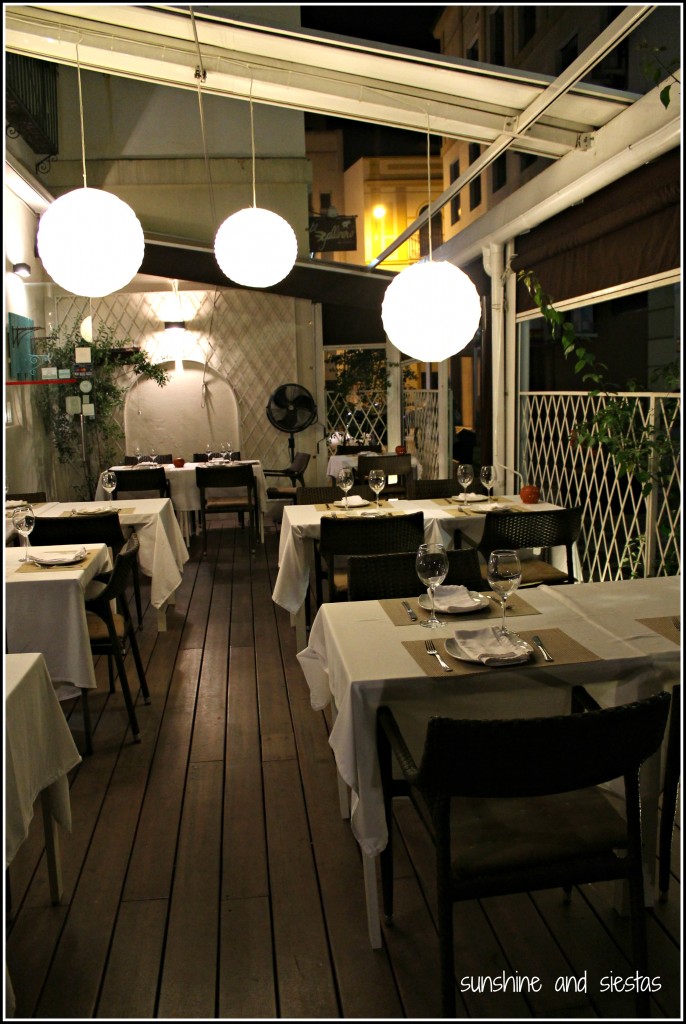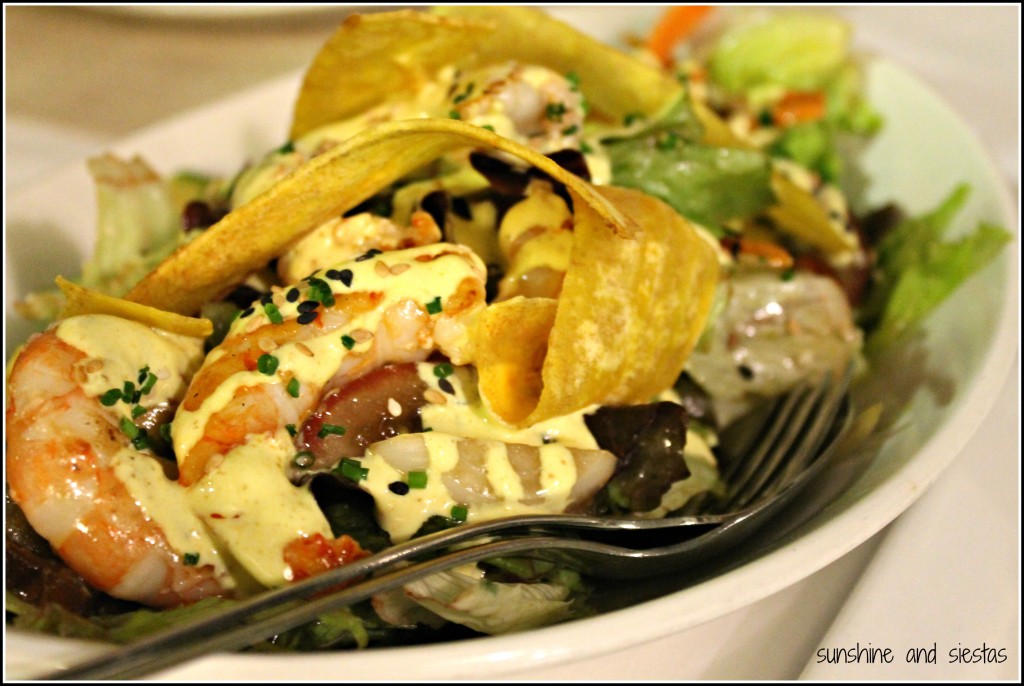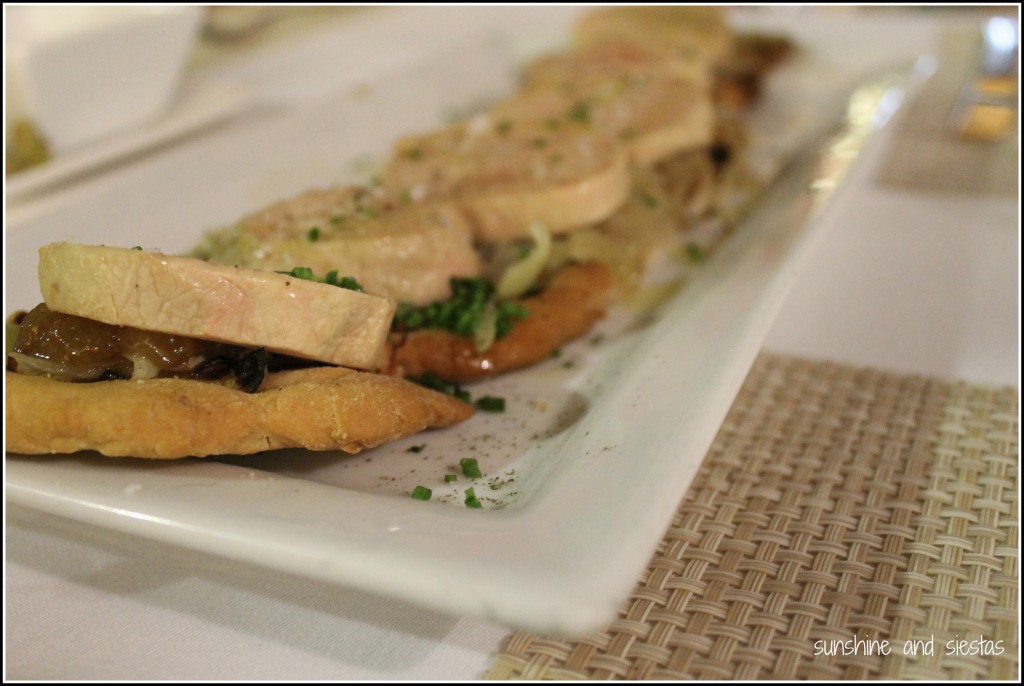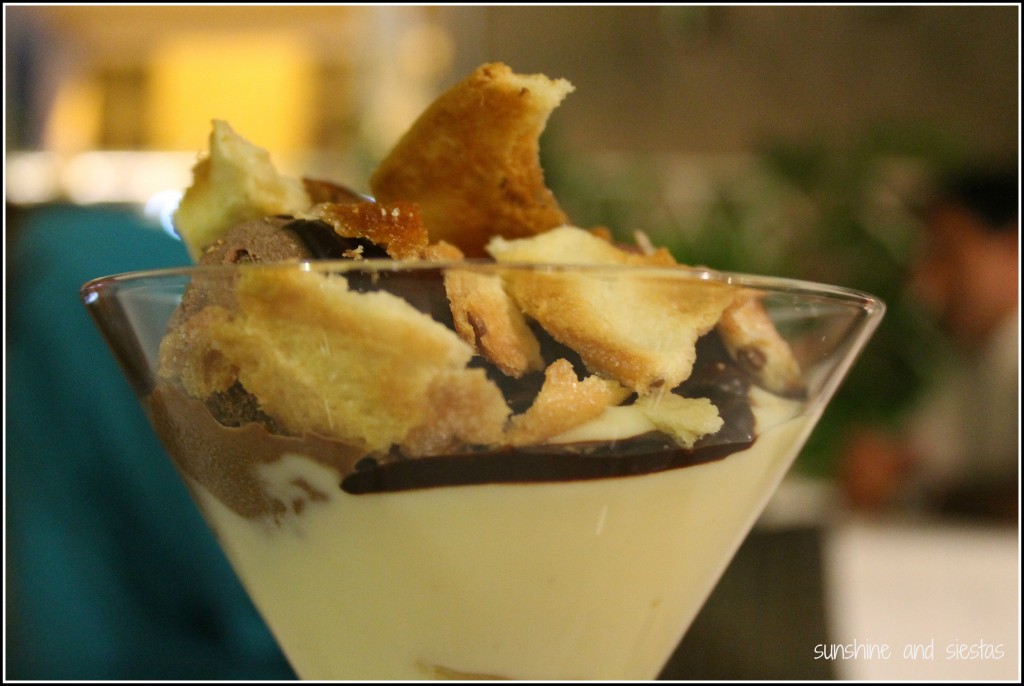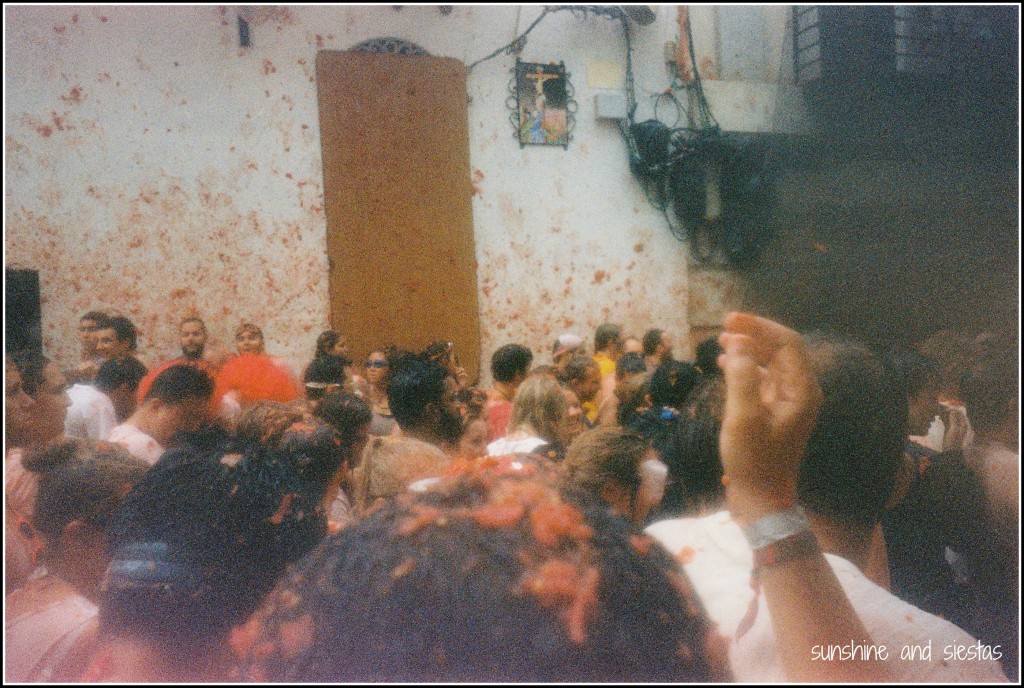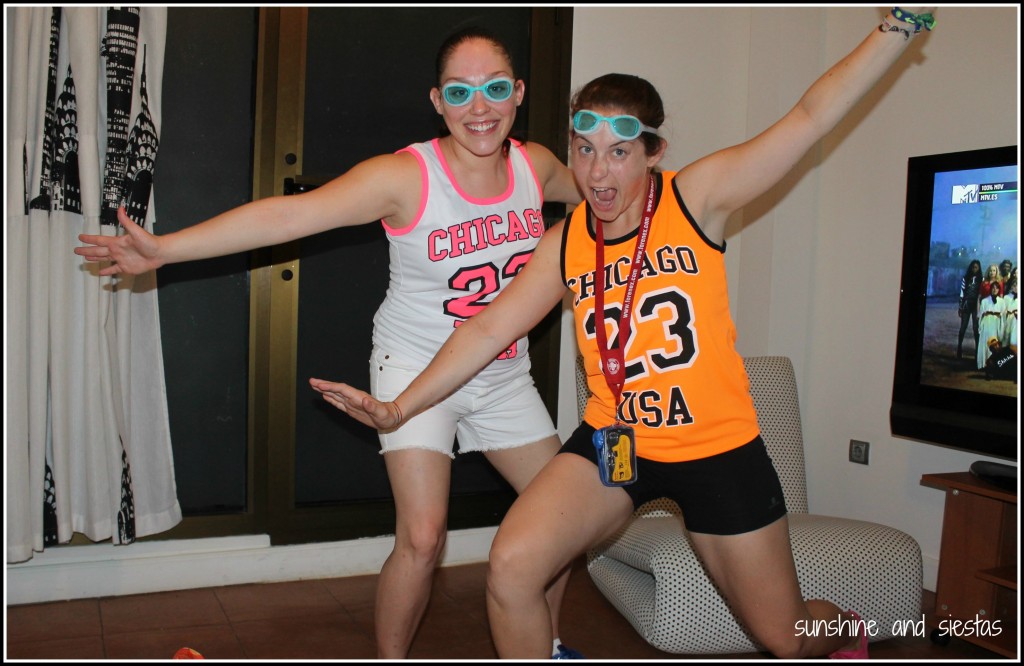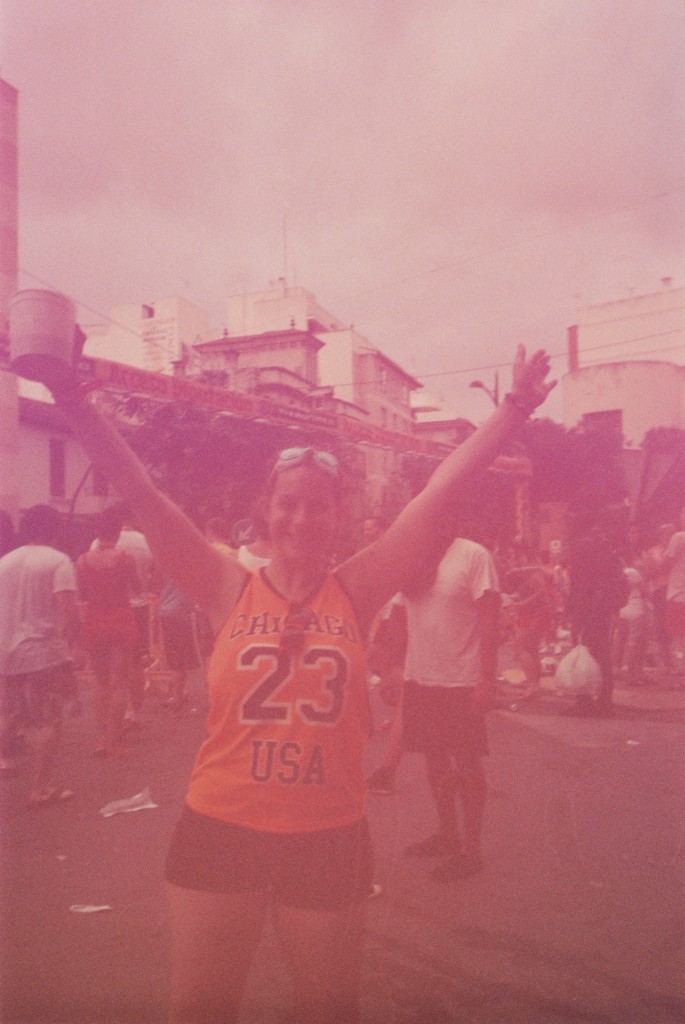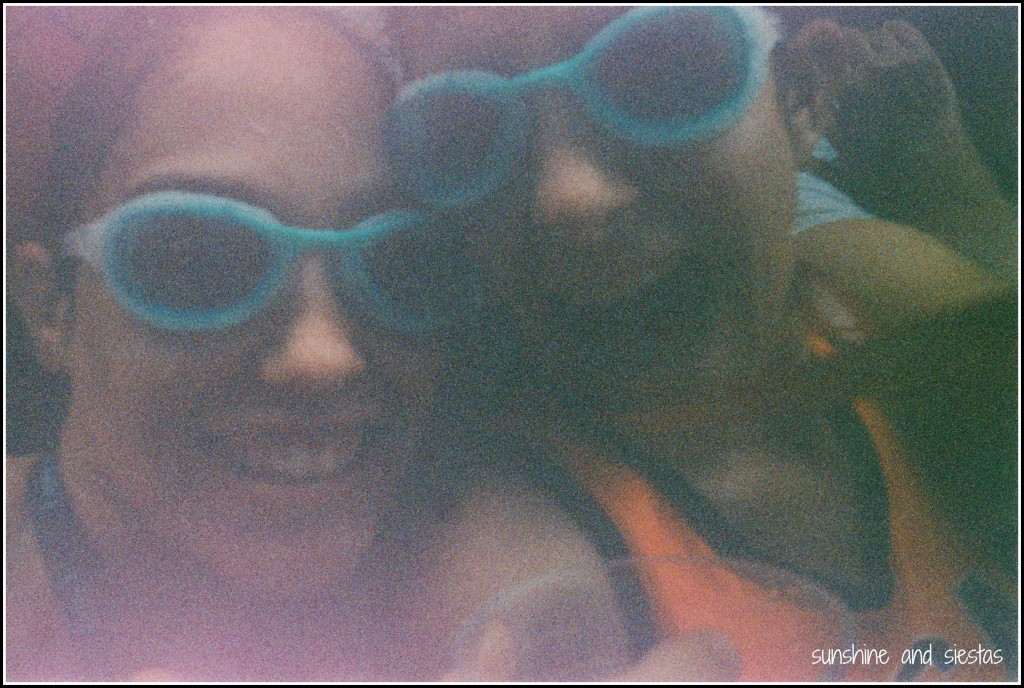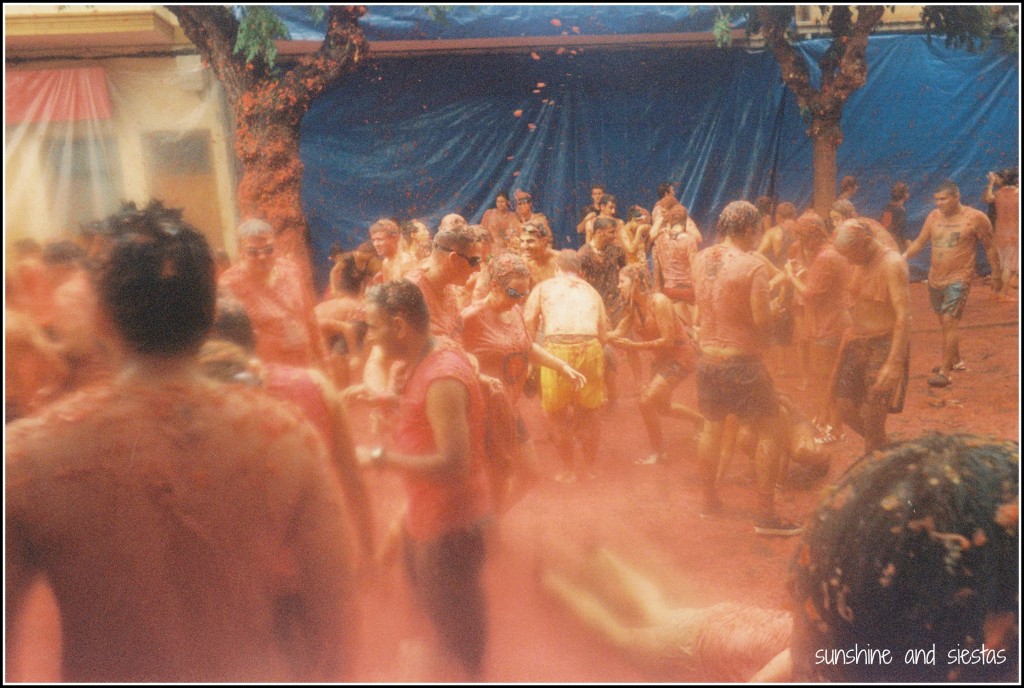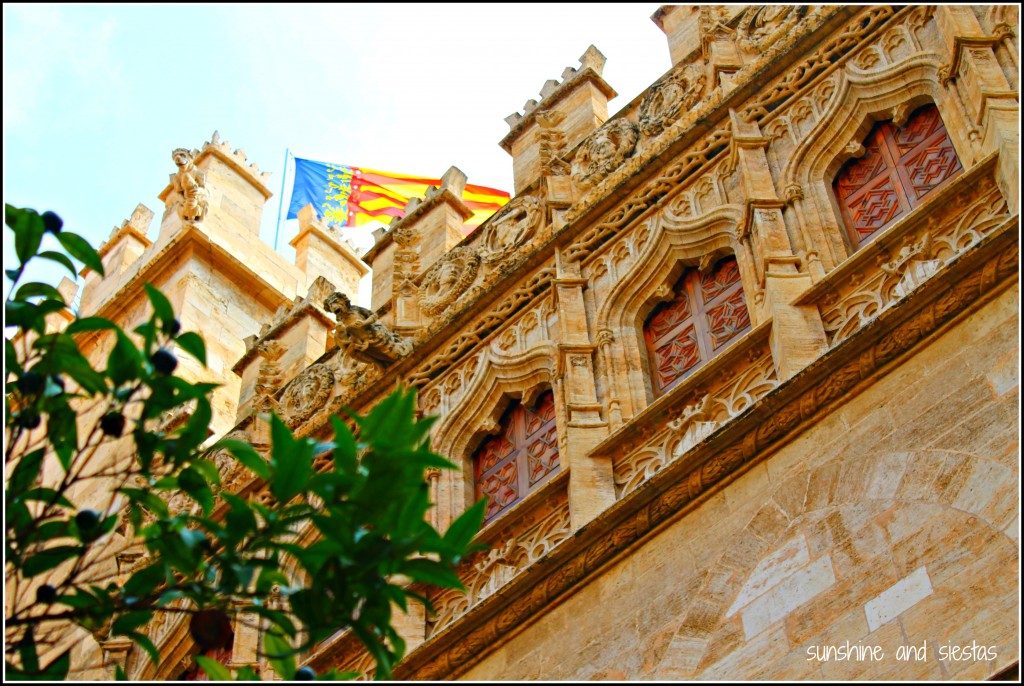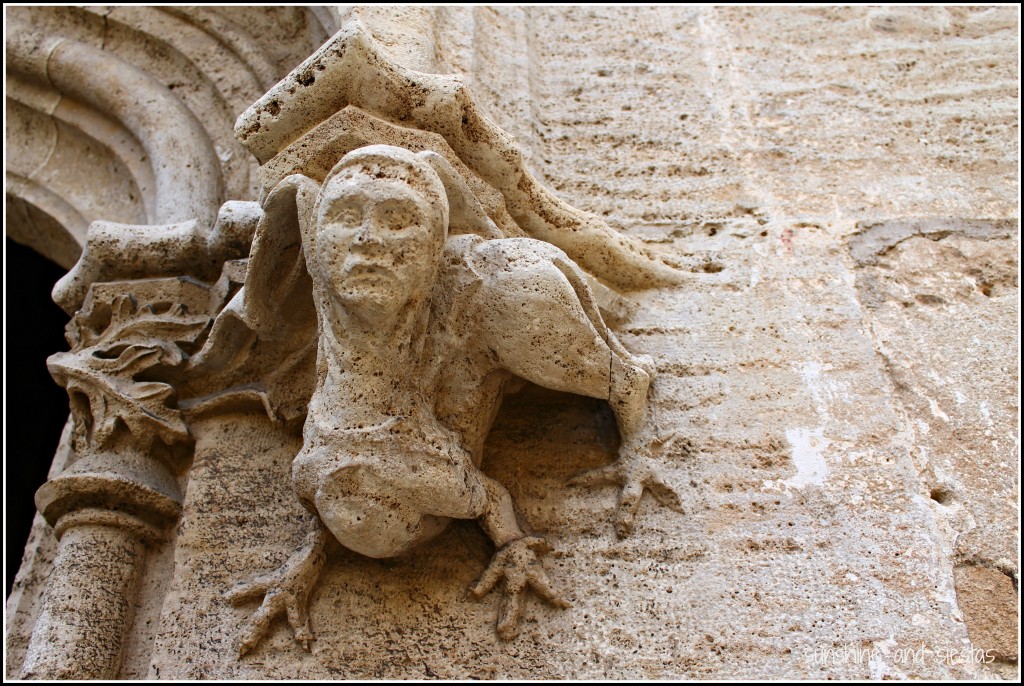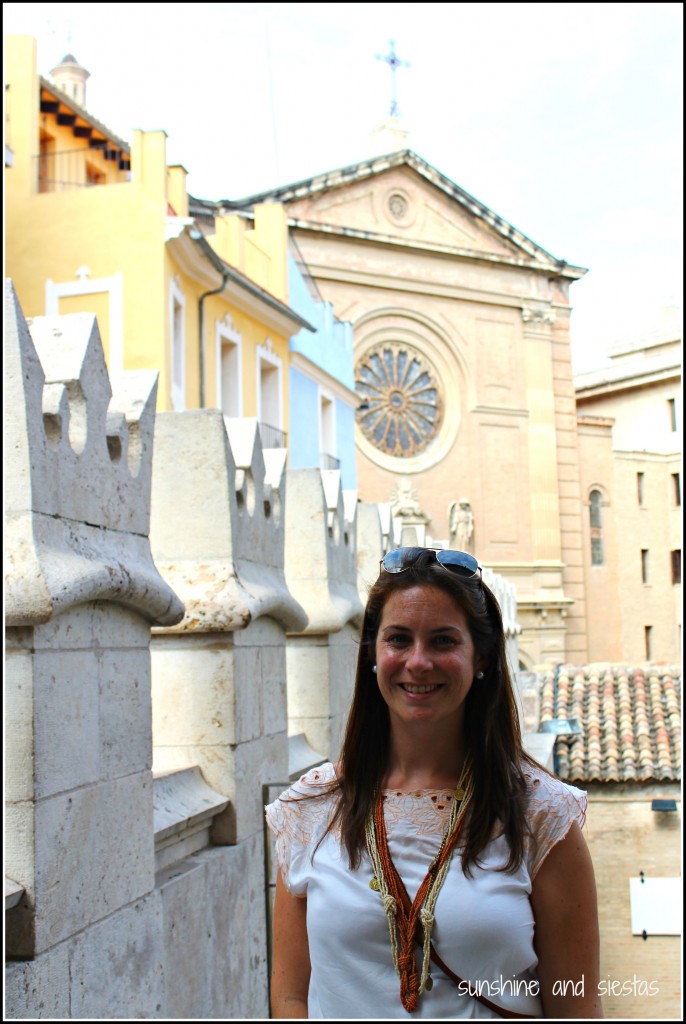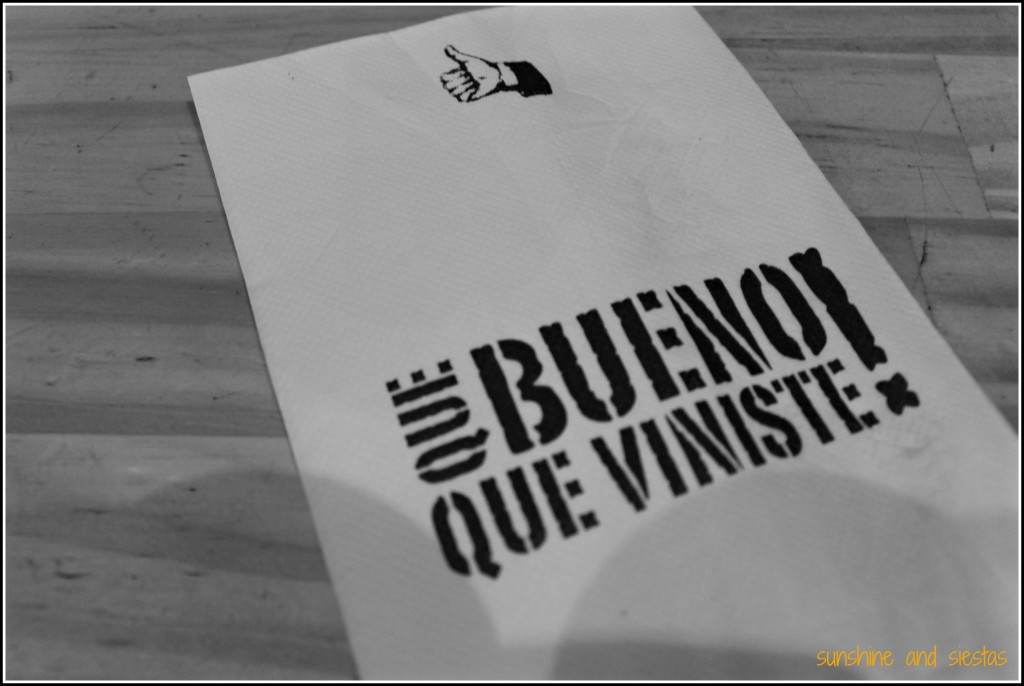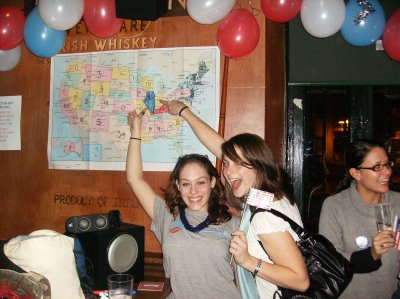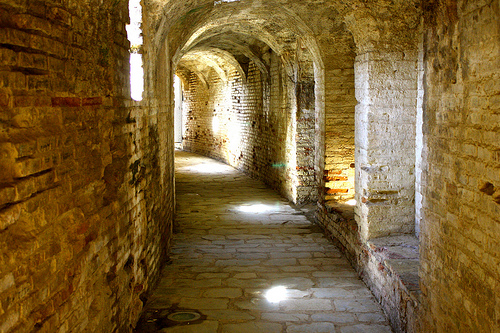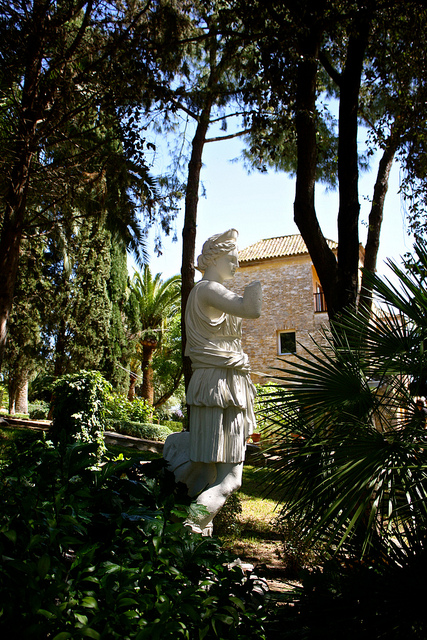El Gallinero de Sandra – Sandra’s Chicken Coop – was what I expected to be an over-priced, chicken-heavy restaurant.
Always one to try a new place and follow my group of American chicks around, I went anyway. My girlfriends always know how to find the good places.
Housed on a pedestrian alleyway between Trajano and Amor de Dios streets, the joint is part of a recent surge in gastrobars, boutiques and trendy watering holes that has the Alameda neighborhood, once associated with junkies and the homeless, ranking as one of Seville’s top nightlife barrios.
Sandra herself greeted us and showed us to a table on a breezy terrace fashioned with fresh white linens, hanging lamps and red accents. We took advantage of one of the last balmy nights to dine al fresco, though the open concept bar and dining area reminded me of an upscale farm restaurant.
As Sandra rattled through what was available off the menu, I went into a temporary coma because everything sounded beyond delicious. L took care of the wine – Garum, a favorite of our group of friends – and we toasted to hatching new plans and a new friend.
The menu at El Gallinero changes constantly, and it had more than just chicken – baked fish dishes, revueltos with everything imaginable, a tempting presa ibérica, though few thoroughly vegetarian dishes. We settled on tuna tartar with vegetables, salad with shrimp and curry sauce, pork loin with creamy rice pilaf and the most decadent foie on top of a flatbread and a garden of caramelized onions. So good, in fact, that I stopped taking pictures and just ate. Dishes were reasonably priced, as well, between 8€ and 16€ for a ración.
Washed down with another French wine – El Gallinero has wines from around the world, as well as a few bottled microbrews and regional liquors – we bellied up for dessert. The lemon meringue was reminiscent of key lime pie, and the coulant and creme brûlée heavenly. Our bill came to roughly 28€ per person with a small tip included.
We agreed the place would be perfect for date night – cozy and intimate – though we were a group of four guiri hens clucking about our summers at lightning speed at a place named Chicken Coop.
What’s your favorite place to have a meal in the Alameda? I’ve got an exciting new food project coming up with the backing of Caser Expat Insurance, so stay tuned!
If you go: El Gallinero de Sandra is located on the pedestrian street Pasaje Esperanza Elena Caro near the Plaza del Duque. Expect to pay 8€ for an omelette or fritata, 9€ for a salad and 11€ for a meat or fish dish. Desserts are 5€ and worth every calorie. The restaurant is open from 13:45 a 16:45 y de 20:30 until close, though closed Sunday night and all day on Monday. Reservations are welcome at reservas@elgallinerodesandra.es.
